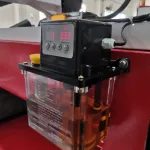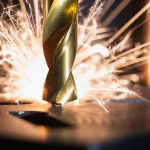Drilling is an age-old reducing system that includes the use of a guide or machine-powered device bit to reduce a cross-sectional gap in a workpiece. The device bit is pressed in opposition to the floor of the workpiece, at which factor it rotates to scoop out material, thereby growing a gap in the workpiece. Friction drilling, however, is a special slicing procedure that’s characterized with the aid of the use of friction. To study greater about friction drilling and how it works, keep reading.
1. History
In 1923, the Frenchman Jean-Claude de Valière tried making a device that ought to make holes in metallic by using friction heat, alternatively of with the aid of machining. It used to be solely an average success, due to the fact at that time the proper substances have been now not but available. Moreover, he hadn’t but located the proper structure for this type of tool. It was not until the 1980s that a useful tool could be produced
2. Introduction
Nowadays, in several industrial applications, the fixing of skinny sheet metallic with the skinny walled part and pipe-shaped profiles becoming are broadly used. Moreover, due to the improvement of current plan in the car industry, the requirement of light-weight constructions is excessive to make bigger the effectivity of car vehicles. As referred to above, for the fastening of sheet metals, three vital traditional strategies for mechanical fastening have existed. They are i) becoming a member of via bolt and nuts, ii) welding of nut and iii) inserting of rivets.
It shows the evaluation of traditional techniques with a novel method. The first technique is bolt fastening technique which is in many instances the usage of fastening approach in fastening of sheet steel constructions, due to the fact that it desires a single gap drilling solely and threading in the sheet metals to be linked, and therefore it is the very convenient and most inexpensive method.
| No | Criteria | Conventional fastening methods | Thermal drilling | |
|---|---|---|---|---|
| Weld nut | Rivet nut | |||
| 1 | Necessity of previously drilled holes and burring | Yes | Yes | No |
| 2 | Complex features | Time-consuming | Time-consuming | Fast in less time |
| 3 | Requirement of special attachment | Yes | Yes | No |
| 4 | Error rate | Very high | Very high | Very low |
| 5 | Automation | Conditionally possible with high effort | Conditionally possible with high effort | Easily possible with high flexibility |
| 6 | Machining of closed frames | Conditionally possible | Possible on circular tubes | Simply possible |
| 7 | Reliability | High | Low | High |
| 8 | Torque level | High | Low | High |
| 9 | Type of connection | Partly joining of microstructure by spot welding | Mechanical and Keyed press connection | Uniformly closed joining of microstructure |
| 10 | Distortion problem | Distortion due to heat input by welding process | Distortion of thread and risk of slipping | No distortion |
However, during fastening of thin sheet metals to each other, the strength problem of the joint is attained by inadequate screwing length. Next two methods are developed to increase the strength of joint such as welding of nuts and inserting of rivets by increasing of screwing length. But those methods also some disadvantages such as thermal distortion, jamming and twisting during assembly and limited stability. Thermal drilling is the only process which provides the solution of ensured adequate screwing length without twisting by the way of formation of bush and threading.
3. Thermal friction drillling process

However, during fastening of thin sheet metals to each other, the strength problem of the joint is attained by inadequate screwing length. Next two methods are developed to increase the strength of joint such as welding of nuts and inserting of rivets by increasing of screwing length. But those methods also some disadvantages such as thermal distortion, jamming and twisting during assembly and limited stability. Thermal drilling is the only process which provides the solution of ensured adequate screwing length without twisting by the way of formation of bush and threading.
4. Advantages
- Very quick process (2 to 6 seconds)
- The process reshapes all material so that no material is lost. The excess material forms a sleeve that is about 3 times longer than the original thickness of the target material, which makes it possible to make very strong bolt joints in thin material.
- It is a clean process because no litter (particles) is produced.
- No access needed to back of workpiece, as with press-in or self-clinching hardware.
- More reliable and faster than rivet nuts (an alternative that also does not require access to back of workpiece).
- Works in almost all kinds of metal.
- Especially thread for wall thickness is 0.8-5 mm

5. Application
The advantage of the thermal drilling technique is relevant in the thin-walled profiles and pipes, which have an enormous position in the purposes of light-weight shape and metal manufacturing.
This approach has to be applied in a range of sheet metals, thin-walled structure, and extraordinary cross-sectioned metals. The most necessary gain of thermal drilling is drilling of spherical cross-section tubes, which is pretty complex. Specific functions of thermal drilling are, bolted fastening, thin-square walled cross-section fittings, sealing of furnace extinguisher and fuel connections, sliding bearings with excessive strength, car door hinges, door locking device, a gap for safety of leakage in stress valve, computer tables curler fittings.
| Automobile | Steering mechanisms, Bull bars, Control pedals, Light fittings, Chassis frame, Fixing of hinges, Dash Frame, Fitting of seats, Exhaust pipes |
| Furniture | Shelving, Desk Frames and Display units |
| Heating, Ventilation | Boilers, Radiators, Pipe manifolds, Water tanks, Gas fittings, Air conditioning systems |
| Construction | Shelters, Building frames, Bridge parapet, Lift shaft, Window frames |
| Agriculture | Crop sprayers, Toppers, Harrows, Ploughs, Tractor Cabs |
6. Conclusion
It is additionally a greater economical technique due to the fact that it does no longer require extra strategies such as welding of nuts and inserting of rivets. Also, it does now not pollute the environment for the length of operation, seeing that it is a chipless gap manufacturing method. It has been perceived that the fee of hardness at drilled zones will increase with the effect of frictional heat, and this circumstance will increase the strength. By preheating of the workpiece and excessive spindle speed, the requirement of thrust pressure and torque ought to be reduced.


